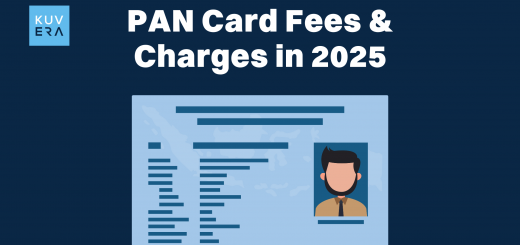E-Way bill system is for GST registered person / enrolled transporter to generate a waybill (document to be carried by the person in charge of conveyance) online on initiation of movement of goods above Rs. 50,000 in relation to supply or for reasons other than supply or due to inward supply from an unregistered person.
E-Way Bill Under GST
A waybill is a receipt or a document issued by a carrier that contains information and instructions pertaining to the transportation of a consignment of goods. The information includes the names of the consignor and consignee, as well as the consignment’s point of origin, destination, and route. In essence, the Electronic Way Bill (E-Way Bill) is a compliance mechanism whereby the person initiating the movement of goods uploads the pertinent data before the movement of goods begins and generates an electronic way bill on the GST portal.
The GST site generates an electronic document called an “e-way bill” to show the movement of goods. It consists of two parts: Part A, which contains information about the recipient’s GSTIN, the location of delivery (PIN code), the date and amount of the invoice or challan, the value of the goods, the HSN code, and the transport document number (also known as the “goods receipt number,” “railway receipt number,” “airway bill number,” or “bill of lading number”); and Part B, which contains information about the transporter (Vehicle number).
Every registered person who causes the movement of goods (which may not necessarily be on account of supply) with a consignment value greater than Rs. 50000 is required to provide the information mentioned above in part A of the electronic way bill in accordance with Rule 138 of the CGST Rules, 2017. E-way bill production is aided by component B, which contains information on transportation.
Every registered person who causes the movement of goods (which may not necessarily be on account of supply) with a consignment value greater than Rs. 50000 is required to provide the information mentioned above in part A of the e-way bill in accordance with Rule 138 of the CGST Rules, 2017. Part B, which contains transport details, assists in generating an electronic way bill.
Who Should Generate The E-Way Bill And Why?
If the shipment is being transported by their own or a hired vehicle, by train, by air, or by ship, they must produce the e-way bill themselves. If the products are given to a transporter for road transportation, the transporter must produce an Electronic way bill. If neither the consignor nor the consignee creates an electronic way bill and the value of the items exceeds Rs. 50,000, it is the transporter’s duty to do so.
Additionally, it is stated that regardless of the value of the consignment, the principal is required to generate the e-way bill when products are shipped from a principal located in one state to a job worker located in any other state.
Also, when handmade goods are transported from one state to another by a person exempted from the registration requirement, the electronic way bill must be generated by the exempted individual regardless of the value of the shipment.
How Is It Generated?
The person who is causing the movement of goods with a consignment value of over Rs. 50,000 must fill out Part A of an e-way bill, and the person transporting the goods must fill out Part B (transport information).
When a registered person transports goods, whether as a consignor or recipient, that person must generate the e-way bill by providing the necessary information in part B on the GST Common Portal. When the goods are given to the transporter for transportation by road without an electronic way bill being issued by the registered person, the registered person must provide information about the transporter in Part B of FORM GST EWB-01 on the common portal. The transporter will then generate the electronic way bill on the said portal using the information provided by the registered person in Part A of FORM GST EWB-01.
In lieu of the tax invoice, a registered person can obtain an Invoice Reference Number from the common portal by uploading a tax invoice he has issued in the form GST INV-1 on the aforementioned portal and presenting it for verification by the appropriate officer. This number is valid for thirty days starting from the date of upload.
In the aforementioned situation, the common portal will automatically fill in Part A of Form GST EWB-01 for e-way bill generation based on the information provided in Form GST INV-1, so the registered person will not need to enter any information there. A unique e-way bill number (EBN) shall be made available to the supplier, the recipient, and the transporter on the common portal upon generation of the e-way bill on the common portal.
If the recipient has registered on the common portal, the information of the e-way bill generated must be made available to him or her so they can communicate whether the recipient accepts or rejects the consignment covered by the e-way bill. It will be assumed that the recipient has accepted the stated details if he fails to express his acceptance or rejection within 72 hours of the information being made available to him on the common portal.
Purpose Of E-Way Bill
E-way bills are a technique to track the flow of products, stop tax evasion, and ensure that commodities being transported adhere to the GST Law.
Validity Of E-Way Bill
The legality of an e-way bill depends on the distance to be travelled by the goods. The e-way bill will be valid for one day from the pertinent date for distances under 100 kilometres. The validity will be extended by an additional day for every 100 kilometres thereafter. However, the Commissioner may only prolong the validity term for specific types of goods by issuing a notification.
Additionally, the transporter may generate another e-way bill after revising the information in Part B of FORM GST EWB-01 if, due to extraordinary circumstances, the products cannot be transported within the e-way bill’s validity period.
Cancellation Of E-Way Bill
When an e-way bill is generated in accordance with this regulation, but the items are not transported or are not transported in accordance with the information provided in the e-way bill, the e-way bill may be electronically cancelled on the common portal within 24 hours of its generation, either directly or through a facilitation centre that has been notified by the Commissioner.
However, if an e-way bill has been confirmed in transit by the terms of rule 138B of the CGST Rules, 2017, it cannot be cancelled. The ability to generate and cancel e-way bills by SMS will also be made available.
Finer Points
For any cargo with a value greater than Rs. 50,000, an e-way bill must be generated. E-way bills must only be generated for consignments whose value exceeds Rs. 50,000 in situations where numerous consignments of varied values (per consignment) are transported in the same vehicle. This does not, however, prevent the consignor, consignee, or transporter from generating e-way invoices for each consignment with a value of less than Rs. 50000. Before starting the transport of the goods, the transporter must create a consolidated e-way bill for each consignment that will be transported in the same vehicle by writing down the serial number of each e-way bill.
There is always a chance that many vehicles will be needed to transport the same shipment to its destination, or that unanticipated circumstances may necessitate that the shipment is transported in a different mode of transportation than originally planned. In such cases, the rules require that any transporter who is shifting goods from one conveyance to another during transit update the conveyance details in the e-way bill on the common portal using FORM GST EWB-01 before the transfer and subsequent transportation of the goods.
A copy of the e-way bill or the e-way bill number, either physically or mapped to a Radio Frequency Identification Device embedded on the conveyance in such a manner as may be specified by the Commissioner, must also be carried by the person in charge of a conveyance, along with the invoice, bill of supply, or delivery challan, as applicable. However, if needed, the Commissioner may notify the person in charge of the conveyance to demand that they carry the following documents in place of the e-way bill:
- A tax invoice, a supply or purchase order, or a bill of entry;
- A delivery challan, in which the items are transported for purposes other than by way of supply.
Additionally, it should be noted that the Commissioner may, by notification, require a class of transporters to obtain a special radio frequency identification device, have the device installed on the vehicle, and map the e-way bill to the radio frequency identification device prior to the movement of goods.
E-Way bill to be issued, whether for supply or otherwise.
Regardless of whether the movement of goods is due to supply-related issues or something else, an e-way bill must be issued. When it comes to transportation for non-supply-related purposes, the movement may be for export/import, job-work, SKD or CKD, recipient unknown, line sales, sales returns, exhibitions or fairs, for own use, sale on an approved basis, etc.
Exceptions To The E-Way Bill Requirement
No e-way bill is required to be generated in the following cases:-
- Transport of goods as specified in Annexure to Rule 138 of the CGST Rules, 2017
- Items being transported by a non-motorized vehicle
- Commodities are delivered to an inland container depot or a container freight station for customs clearance from the port, airport, air cargo complex, and land customs station;
- With regard to the movement of goods in those areas that are covered by the concerned State’s notification under rule 138(14)(d) of the SGST Rules, 2017; and
- The value of the consignment is less than Rs. 50,000.
Consequences Of Non-Conformance To E-Way Bill Rules
When necessary, e-way invoices must be issued in compliance with Rule 138 of the CGST Rules, 2017; failure to do so would be regarded as a violation of the rules.
According to Section 122 of the CGST Act, 2017, any taxable person who transports any taxable goods without the cover of specified documents (an e-way bill is one of the specified documents) is subject to a fine of Rs. 10,000 or the amount of tax that is being attempted to be evaded (where applicable), whichever is larger. According to Section 129 of the CGST Act of 2017, any person who transports any goods or stores any goods while they are in transit in violation of the terms of this Act or the rules made thereunder is subject to arrest or seizure. This includes any products, any vehicles used to transport the said goods, and any documents pertaining to such goods and vehicles.
Enforcement
For all interstate and intrastate movements of goods, the Commissioner or an officer designated by him may provide the go-ahead for the appropriate officer to intercept any conveyance and physically check the existence of the e-way bill or the e-way bill number.
The physical inspection of vehicles may also be conducted by a Commissioner-authorized or Commissioner-delegated officer. On receiving specific information about tax evasion, any officer may also conduct a physical inspection of a particular conveyance, provided that they first acquire the Commissioner’s or that officer’s authority’s approval.
Within twenty-four hours of the inspection, the proper officer must register the summary report of each inspection of goods in transit online in Part A of FORM GST EWB-03, and within three days, the final report must be recorded in Part B of FORM GST EWB-03.
No further physical verification of the said conveyance shall be performed in the state unless specific information relating to tax evasion is later made available once physical verification of the goods being transported on any conveyance has been completed during transit at one place within the state or in any other state. The transporter may enter the aforementioned information on FORM GST EWB-04 on the common portal when a vehicle has been stopped and held for more than thirty minutes.
Conclusion
The e-way bill provisions are intended to fix the problems with the previous way bill system, which was used to calculate VAT in several states and was the main cause of the delays at the checkpoints. Additionally, different states issued varying e-way bill regulations, which made compliance challenging. The GST’s e-way bill provisions will introduce a consistent e-way bill regulation that will be used all across the nation. The digital interface will replace the physical interface and enable a quicker flow of commodities. Increasing the average distance travelled and lowering the trip time and expenses is certain to decrease vehicle turnaround times and support the logistics sector.
Interested in how we think about the markets?
Read more: Zen And The Art Of Investing
Watch/hear on YouTube:
Start investing through a platform that brings goal planning and investing to your fingertips. Visit Kuvera.in to discover Direct Plans and Fixed Deposits and start investing today.
#MutualFundSahiHai #KuveraSabseSahiHai!











